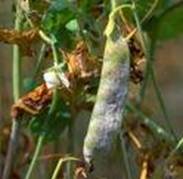1.PG 3:
2.Punjab 88:
Mid-Season Variety
Soil –
Climate –
Time of sowing
Propagation by seed .
Seed Rate
For sowing in one acre land use seed rate of 35-40 kg/acre.
Seed Treatment
Use any one of fungicides
| Fungicide name | Quantity (Dosage per kg seed) |
| Captan | 3 gm |
| Thiram | 3 gm |
| Carbendazim | 2.5 gm |
Spacing
Use spacing of 30cmx5cm for early varieties and for late varieties use spacing of 45-60cm x 10cm.
Sowing Depth
Sow the seeds at depth of 2-3cm in soil.
Method of sowing
For sowing use seed cum fertilizer drill on ridges which are 60 cm wide.
Fertilizer Requirement (kg/acre)
| UREA | SSP | MURIATE OF POTASH |
| 45 | 155 | On soil test results |
Nutrient Requirement (kg/acre)
| NITROGEN | PHOSPHORUS | POTASH |
| 20 | 25 | # |
Fertilizer Requirement (kg/acre)
| UREA | SSP | MURIATE OF POTASH |
| 45 | 155 | On soil test results |
Nutrient Requirement (kg/acre)
| NITROGEN | PHOSPHORUS | POTASH |
| 20 | 25 | # |
1) Pea leaf Miner:
Symptoms-
Management-
2) Pea Thrips and Aphid:
Symptoms-
3) Pod borer :
Symptoms-
Management-
1.Fusarium wilt: Fusarium oxysporum f.sp. pisi

Symptoms
Management
2) Rust : Uromyces fabae


Symptoms
Management
3.Powdery mildew: Erysiphe polygoni

Symptoms
Management
Storage is done at low temperature to increase the availability of green pods for longer duration. Packing is done in gunny bags, corrugated fibre board boxes, plastic containers and bamboo baskets.
Yield: 8 -12 t/ha
